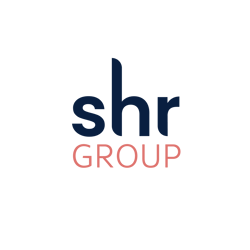The COVID-19 pandemic and subsequent travel lockdown has level-set many of the hospitality industry’s expectations. Whether, and when, things will “return to normal” is no longer applicable – both owners and operators must adapt their strategies to compete in the current environment and future-proof their organizations to remain relevant long term.

One of the most impactful strategies hoteliers must revisit is how they acquire customers. Travelers are shopping in different ways and looking for new kinds of experiences. Hoteliers are acutely focused on reducing costs and driving more profitable bookings, desperately needing to fill their hotels with the highest-paying guests.
Meanwhile, the digital marketing game is evolving at a rapid pace. Many of the channels hoteliers traditionally relied on for acquiring guests – OTAs, metasearch channels, Google, Facebook – are placing a heightened emphasis on customer privacy, creating hurdles for how hotel marketers track the traveler’s online booking journey. This is leading more hospitality digital marketers to shift from using third-party cookies to using their internal data – first-party cookies – for building better connections with their guests.
For all these reasons, hoteliers find themselves at an inflection point with an impetus on driving travelers to their direct websites and converting more direct bookings. Below, we outline several strategies hotels can implement now to ensure they’re driving more direct traffic and then converting more of those lookers into bookers.
- Create cohesive strategies between marketing and revenue departments.
Here are common situations within hotels today: The revenue department identifies an upcoming need period – maybe weekday occupancy for the month of October is down – so they implement and distribute a discounted rate across all channels for those days without discussing the objective with Marketing. Or, on the flipside, Marketing creates a well-designed promotion that speaks to a certain segment of travelers without speaking to the Revenue team to identify need periods and preserve rate integrity.
Hotels will create the most successful strategies when their departments are aligned on common goals and build strategies that will drive the most profit. Revenue should identify need periods and then work with Marketing to determine the best strategies to fill, using segmented approaches that target specific travelers on specific channels.
- Lean on first-party data to build better guest connections in cookieless world.
Real-time and historical data, machine learning techniques, and a multichannel marketing strategy will be the recipe for hotel marketer’s success in a cookieless world – with a special focus on first-party data. First-party data comes straight from your audience, so you can be sure it’s relevant to your hotel. First-party data helps you learn about your guests interests, preferences and booking behaviors. Armed with this data, you can make informed strategies, because you’re better able to predict future behaviors.
The right method of data collection is key to building actionable audiences for full funnel advertising and to build those deeper connections with your guests. There are three main data sources that will help drive performance moving forward. The first is hashed emails, a term hoteliers will hear more in the coming months. Emails are the new digital passport for consumers, you need them to make purchases on Amazon, send money on Venmo, and to confirm a hotel booking online, to name a few. Hashing an email turns a unique email into a pseudonymized string of characters that enables hoteliers to continue targeting effectively when the third-party cookie is no more.
The second data source is first-party cookies – those cookies you use on your site to collect information about your guests – that allow for collecting data without forcing a login in each site visit. Hashed emails and first-party cookies work together on your site. The third data source – historical booking data – allows for more robust profiles primarily through adding offline booking data into the mix with your historical online booking data.
- Perfect your Metasearch Distribution Strategy.
As valuable as metasearch is now for hoteliers – two out of three independent hotels receive direct bookings from metasearch engines and 75% of travelers are believed to use metasearch engines in their search process – it will become even more critical in a cookieless world. Metasearch does not rely on third-party cookies, so now is the time to activate, or perfect, those metasearch strategies to stay ahead of the game. The key with metasearch is that you’re driving direct bookings to your website, which means you own the guest relationship, you can collect that high quality first-party data, and you’ve got the opportunity to upsell before arrival.
How do you ensure that your metasearch strategy is effective in getting travelers booking?
– Rate parity is a key success factor. It’s important to note that rates are pulled dynamically from a different source of inventory and adapted to the user’s location (taxes, currency). Whatever rates you are sending to the OTAs must be updated everywhere to ensure success.
– Display your best rate first. Display the Best Available Rate (BAR) within the first two results on your webpage and prevent a potential booker from having to scroll for it. While it’s tempting to drive them to your most expensive room rates, the experience is better when they are driven to the same rate you are advertising on metasearch.
– Be visible on Google Maps and search. Google My Business helps you manage all that important information your guests are looking for like location, phone numbers, loyalty offerings, amenity details, and reviews. The more visible you are, the more brand awareness you’re getting.
– Flexibility and safety first. Display flexible cancellations and safety updates prominently to encourage travelers to choose your hotel over your competition.
- Use Facebook and Instagram to inspire travelers and drive direct traffic.
Travelers spend five times more time on Facebook than any other travel-related touchpoint. Instagram, filled with user-generated photos and videos of destinations, hotels, and attractions, is a major source of inspiration for travelers. Promoting your brand on Facebook and Instagram gets your brand in front of high-intent travelers and drives them to visit your website and engage with your brand early on in their trip search. Best of all, travelers get inspired for their trips on social often before they know they’re ready to travel, with over 60% of millennials stating they found inspiration for their most recent trip on Facebook or Instagram.
Tips to improve your Facebook and Instagram presence and targeting:
– Partner with local attractions and restaurants to highlight deals and get travelers excited to visit your destination and maximize their trip time while staying at your hotel.
– Build for mobile first. Mobile is the predominant way users engage with social platforms, so you should build your creative for mobile and think about how you can stand out above your competition in a customer’s mobile experience. To do this, make your video shorter in duration (6-15 seconds max), design for sound off, and communicate your message clearly, as people move quickly on mobile.
– Target affinity audiences (previous converters). Now more than ever, it’s important to target and engage those that have visited your website or stayed with you before. During the pandemic, it’s a greater risk to go somewhere new so travelers are more likely to book rooms at hotels they have previously stayed at. Offer a special discount for those repeat bookers.
- Segment your customer base to offer more personalized marketing.
A hotel’s customer mix and demand base is likely dramatically different today than it was in 2019. For example, hotels are filling their rooms with leisure travelers as meetings and conventions struggle to navigate the dynamic COVID landscape. Also, many hotels are seeing dramatically increased demand from local travelers looking for a staycation.
Using past stay history and a database of guest profiles, hotels can segment their list and send promotions to smaller groups of travelers, which will convert more bookings and reduce the amount of people who unsubscribe from your marketing promotions. While most CRMs allow hoteliers to score their guests on recency, frequency and monetary spend, advanced systems allow hoteliers to consider advanced segmentation like cancellation percentage and upsell conversion. Now they can send deeply targeted promotions, such as to travelers within a 100-mile geographic radius who haven’t visited in six months but rarely cancel their bookings and always purchase breakfast.
- Welcome travelers to your website with optimal content and offerings.
As more travelers go digital, hotels must ensure they’re welcoming guests online just the same as they would welcome them in the lobby—with warm hospitality and the right offers and upsell opportunities. Traditionally, booking engine providers and website designers have been separate entities with separate focuses. Websites are created with beautiful content, imagery and descriptions, and then once the guest selects an offer and moves over into the booking engine—where real-time rates and inventory are served—the experience is clunky, or at least very different.
Today, much of this information can be passed between the two systems in a seamless manner. When a booking engine knows more about the guest, including their website activity, it can serve a more relevant offer.
- Implement guest-recognition programs that provide instant gratification.
Oftentimes, hoteliers confuse the traditional points-based loyalty programs with simple guest-recognition programs. It’s not necessary for hotels to have gigantic loyalty schemes that reward customers once they’ve spent so much money or booked so many nights at their hotels. Instead, today’s travelers want instant gratification – they want rewarded on the spot – and that gratification can come in the form of “value” rather than always through a discount.
Hotels can create a guest-recognition program that travelers can access by giving their contact information, and then use that information to learn more about the traveler and present more relevant offers to them. Based on demand needs, hotels can consider providing “fenced” rates to these travelers and make these the lowest rates available anywhere on the web. But, again, guest-recognition programs can be used to tailor higher-converting offers and personalize the guest experience rather than always providing a discount.
by Allegra Medina (SHR) and Christy Jobman (Sojern)



